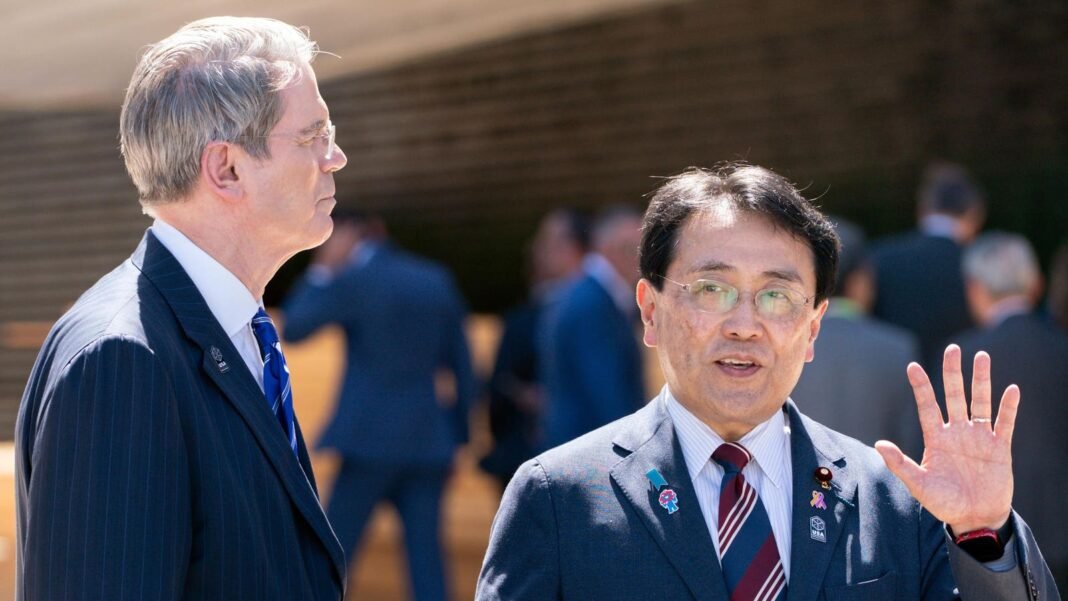Resolving Tariff Disputes: A New Chapter in U.S.-Japan Trade Relations
Revising Tariff Policies on japanese Imports
The United States administration has agreed to modify a presidential directive concerning tariffs applied to Japanese goods, addressing what Japan’s lead trade negotiator called a “deeply unfortunate” administrative error. This correction eliminates the unintended stacking of multiple tariffs on identical products,which had caused confusion due to differing interpretations between the two governments.
For instance, reciprocal tariffs set at 15% for Japanese imports will now replace previous levies rather than being added cumulatively. Textiles that were initially subject to a 7.5% tariff will henceforth face only the single 15% rate rather of an incorrect combined total of 22.5%. Similarly, items like beef-already taxed at rates above 15%, such as 26.4%-will retain their current tariff without any additional charges layered on top.
The Japanese trade representative confirmed that the U.S. government has pledged to refund any excess duties collected during this period due to the oversight.
A Fresh Approach to Automotive Tariffs
The White House is preparing a new executive order reflecting prior agreements aimed at lowering tariffs on Japanese automobiles and auto parts from 27.5% down to 15%. This adjustment follows commitments made by former President Trump linked with Japan’s promise of investing $550 billion into various sectors within the American economy.
Market Reactions Following Trade Clarifications
This declaration triggered positive momentum across financial markets, with Japan’s Nikkei 225 index rising approximately 1.85%, surpassing recent levels above 41,800 points. Leading automakers saw even stronger gains: Toyota shares climbed nearly 3.5%, while Honda and Subaru stocks surged close to four and five percent respectively-reflecting investor confidence in improved bilateral trade conditions.
Understanding the U.S.-Japan trade Agreement
The agreement was publicly introduced last month when President Trump announced reductions in tariff rates from an initial threat level as high as 25% down to a uniform rate of 15%.In return for these concessions,Japan committed substantial capital investments totaling $550 billion into diverse sectors across the United States-a figure regarded as one of the largest bilateral investment pledges in recent decades.
Japanese prime Minister Shigeru Ishiba described this deal as heralding a “new Golden Era,” emphasizing investment growth over mere tariff adjustments-a strategic pivot designed to deepen economic ties between both nations.
Divergent Interpretations Spark confusion
Despite public statements highlighting mutual benefits, ambiguity surrounding specific terms led officials and analysts alike toward conflicting interpretations as no formal joint document was promptly released after announcements were made via social media channels.
The Debate Over The $550 Billion Investment Commitment
A significant point of contention centers around how much actual new capital Japan plans versus financing through loans or reinvested earnings already circulating globally:
- U.S.’s Viewpoint: Officials assert this sum represents entirely fresh funds designated for american projects with expected returns primarily benefiting U.S.-based stakeholders.
- Japan’s Perspective: Authorities estimate only about one or two percent constitutes direct new investment; most funds are anticipated through credit arrangements or indirect channels rather than outright equity injections.
This discrepancy fuels ongoing debate regarding clarity and realistic expectations about cross-border financial flows embedded within contemporary trade agreements today.
“The $550 billion commitment resembles not just an upfront signing bonus but also involves complex layers including loans and reinvestments,” noted an economic analyst familiar with Asia-Pacific finance trends (2024).
Toward clearer Implementation Guidelines
The forthcoming executive orders aim not only at rectifying previous errors but also establishing clearer protocols designed to prevent similar misunderstandings going forward-ensuring smoother collaboration between Washington and Tokyo amid evolving global challenges such as post-pandemic supply chain disruptions and shifting geopolitical alliances influencing trade policies worldwide.
Evolving Global Factors Shaping Trade Dynamics
- Sustainability Commitments: Both countries increasingly incorporate environmental standards into their agreements responding to growing consumer demand for eco-friendly supply chains;
- Diversification Strategies: Companies seek alternatives beyond traditional manufacturing hubs partly due to rising labor costs;
- Diplomatic Engagements: Enhanced dialog mechanisms facilitate faster dispute resolution compared with past decades where prolonged standoffs impeded progress;
The Future Path for U.S.-Japan Economic cooperation
This recalibration marks a pivotal milestone toward stabilizing bilateral commerce amid fluctuating global markets shaped by rapid technological innovation alongside geopolitical uncertainties throughout Indo-Pacific regions.
.





